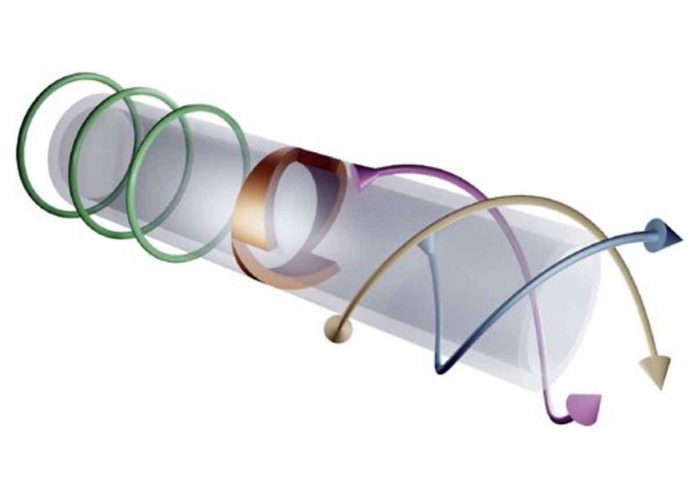University of Exeter and Piazza Leonardo da Vinci scientists have shown that corkscrew elastic waves carry well-defined orbital angular momentum. The study has been published in the journal Physical Review Letters. Scientists described experiments they conducted with aluminum pipe and simulations they built. It showed the possibility of using waves of vibration moving along the walls of a pipe in new types of applications.
Previous research has shown that the wave front of a twisted light beam can be made to move like a corkscrew because it has orbital angular momentum. Scientists wondered if the same might be true for acoustic waves. Previous research also shown that helical elastic waves can be generated by pushing elastic waves through the walls of a pipe. Scientists sought to determine whether such waves can carry OAM.
They started by building a special pipe that showed that elastic waves traveling along its lengths could be converted to flexural waves curling around the circumference of the pipe due to helical wavefronts. Scientists got encouraged by their results. They started analyzing the system theoretically. They used that work in the creation of simulations that showed that the waves did indeed carry OAM.
Scientists then carried the idea further by imagining the waves with OAM as they moved into a fluid at the far end of their pipe. They found evidence suggesting that they incited pressure waves that also had helical wavefronts, in analyzing the impact such waves would have on the water. They note that this property could be used to monitor the behavior of fluids in certain applications for cracks in pipes. They also note that pressure waves with OAM are used in acoustic tweezers. This approach can add a new way to create and use them. The approach can be used to create tweezers that are capable of manipulating extremely small objects in biological systems.

